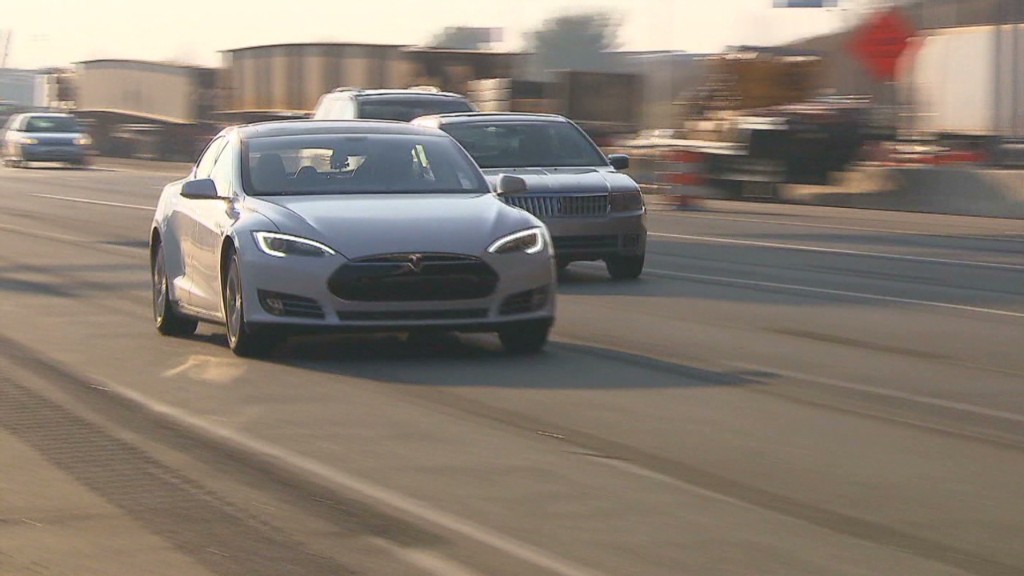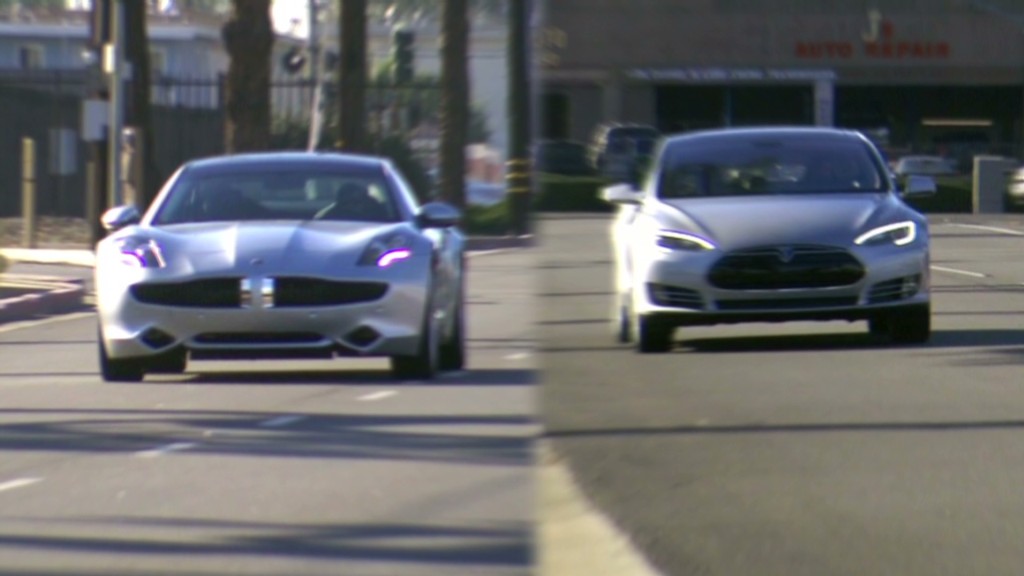
Our Tesla Model S drive from Washington, D.C. to Boston generated a lot of interest. And a lot of questions.
We'll try to answer some of them here:
Will electric Superchargers make gasoline cars obsolete for family vacations?
Not any time soon.
Driving a fully electric car a long, long way still requires forethought, planning and commitment. Gasoline powered cars just require gasoline.
Remember, we took no side trips. We even called the experts at Tesla before we decided which route to take from the New Jersey Turnpike to Milford, Conn. Someone driving a gasoline car or a plug-in hybrid like the Chevrolet Volt doesn't need to call engineers before deciding whether to take the George Washington Bridge or the Tappan Zee.
How long did it take to recharge?
About an hour.
Thanks to Tesla's Superchargers, that's a lot less time than an electric car ordinarily takes to charge, especially one that can go 270 miles. On the other hand, it's much longer than it takes to fill up a gas tank.
So, again, driving an electric car on an interstate run requires a bit more planning. In our case, charging stops served as lunch and dinner stops. The only problem was we were reduced to eating overpriced rest-stop food, so, you may end up eating more chicken wraps than you'd like to. At least the electricity was free.
Was the experience what you had expected?
No.
I had expected Tesla's rules to be much more restrictive and annoying than they actually were. In fact, I confess, I was sort of hoping they'd be annoying. It would have made for a fun story. ("Sure, you could drive from Washington D.C. in a Tesla. If you're a masochist!") But they weren't. In fact, it wasn't much worse than many long road trips I've taken in countless gasoline powered cars.

Does this prove that the New York Times story was a fake?
We were not trying to replicate that reporter's trip, so all we can say on this topic is that our trip was different.
We did our trip in one day, not two, and we took no side trips. Also, the weather -- something obviously beyond our control -- was warmer on the day we traveled. It would have been impossible to replicate that reporter's drive even if we had wanted to. (Generally speaking, cold temperatures reduce a Model S's driving range by about 4%, according to Tesla.)
Related: Tesla's Elon Musk fires back at the New York Times
Were there a lot of rules to follow when making the trip?
Yes, a few. Tesla offered us some tips to maximize our chances of success and we followed them.
First of all, the car was set up for maximum range and the battery was set to charge fully, not just most of the way, the way it normally is in order to maximize battery life. Also, we were told to maintain a speed of between 60 and 65 miles an hour and to set the car's climate control to 72 degrees and keep it in "Eco" mode.
During one stretch, when we were detouring around New York City traffic, we were advised to slow down a bit more.
Why follow Tesla's recommendations?
Following the recommendations seemed the fairest way to test the basic concept of the Supercharger network.
Once it's established that the Supercharging network is functional (and how well it works when used according to the manufacturer's recommendations,) perhaps then it might be educational to push the envelope a bit and see how far one could stray before the system fails.
Now we know it can work and that using it needn't be especially onerous.
How was the car?
I think it's a phenomenal car and well worth its admittedly hefty price tag.
This isn't a case of paying an electric car "premium," either. Given its performance and luxury, the Model S competes well against similarly priced gasoline-powered cars from BMW, Audi and Mercedes-Benz.
Infographic: What's different inside the Tesla Model S
Were there any glitches with all that fancy car tech?
Yes, a couple minor ones.
Early in the drive, the driver's side door began refusing to open. Then the touch screen that controls most of the car's functions froze up. A call to Tesla got both problems fixed in a few moments.
Are there enough Superchargers to do the job?
If the job is simply to get a Tesla Model S car to go between Boston and D.C., there are, but just barely.
That 200 mile stretch between Newark, Del. and Milford, Conn., seems needlessly sweat-inducing. It also limits flexibility, reducing the system to simply a way of shuttling cars between two distant points.
Adding more Superchargers will allow drivers a little more leeway to, perhaps, take a side trip every now and then. (There actually are some really beautiful spots in New Jersey, you know.) Tesla says it's working on getting more Superchargers up and running.
Did you see any other Tesla's getting charged while you were on your trip?
Nope, but that just made us feel special.
Could you have any fun on an all-electric road trip?
Sure, there were places and times when range was not really an issue.
In fact, that was the case in all but the long middle leg of the trip between Delaware and Connecticut. When range wasn't issue, I simply drove as I normally would -- kind of fast but not fast enough to get handcuffed -- and I enjoyed the car's performance.

